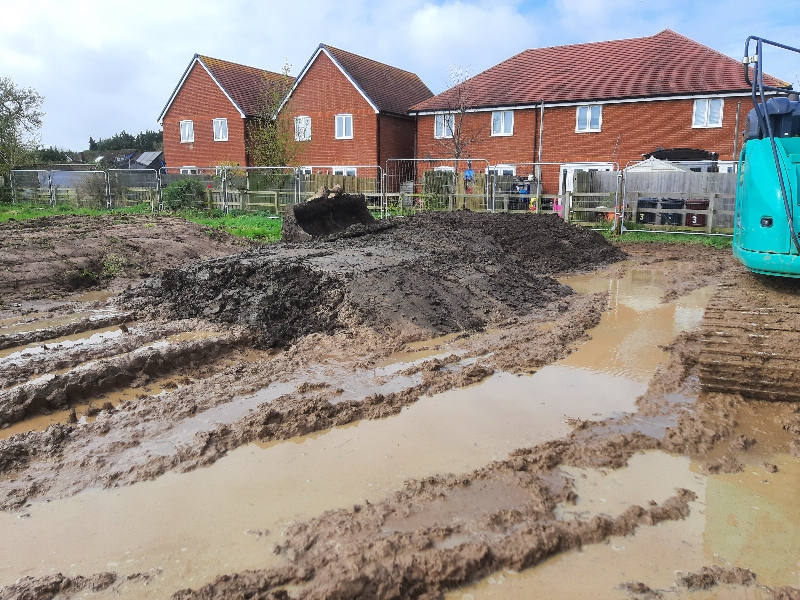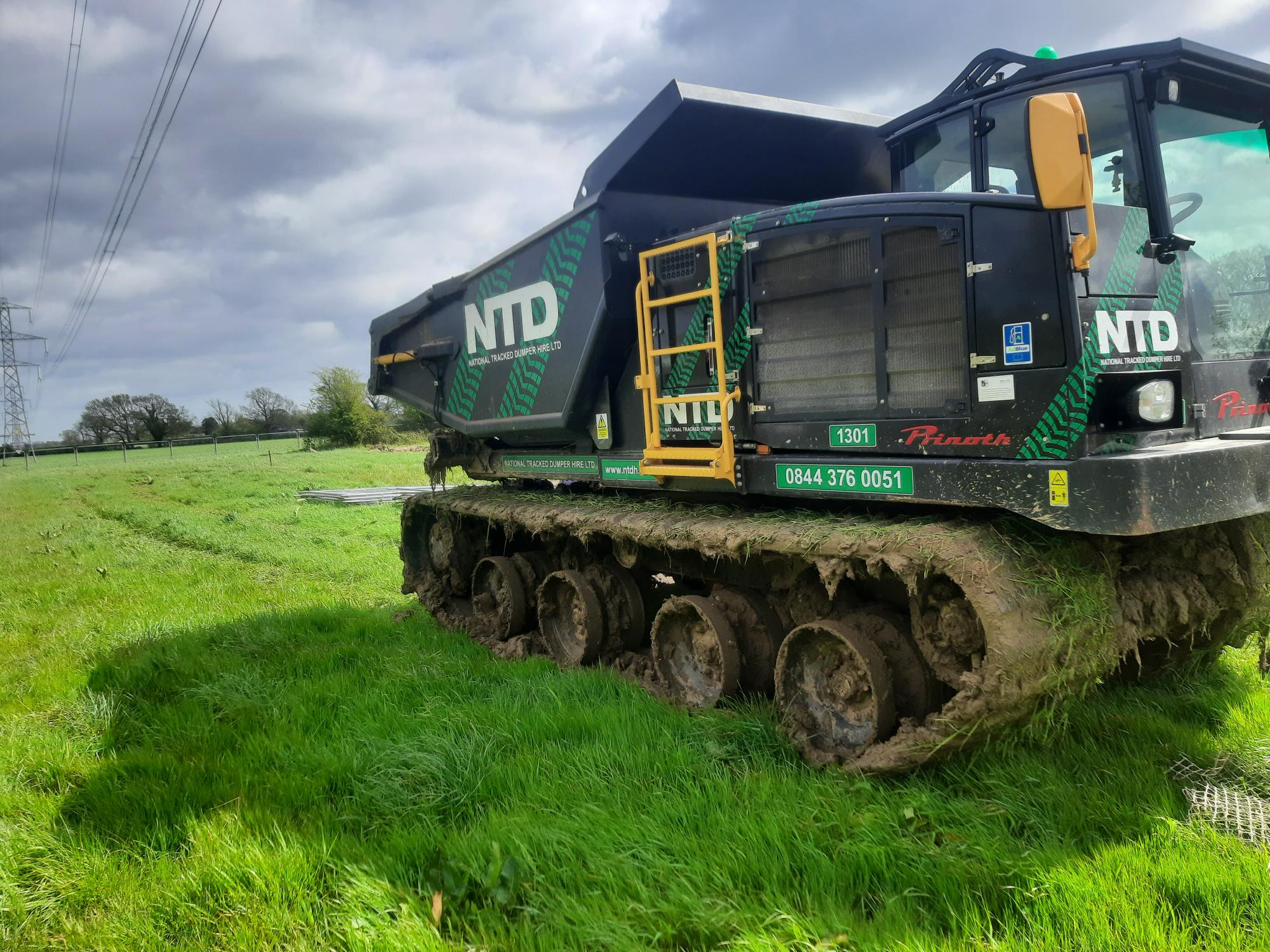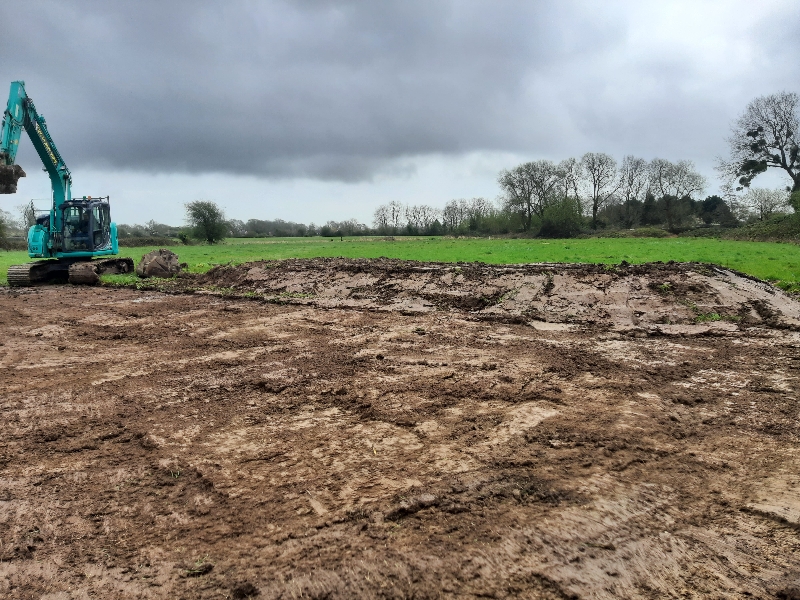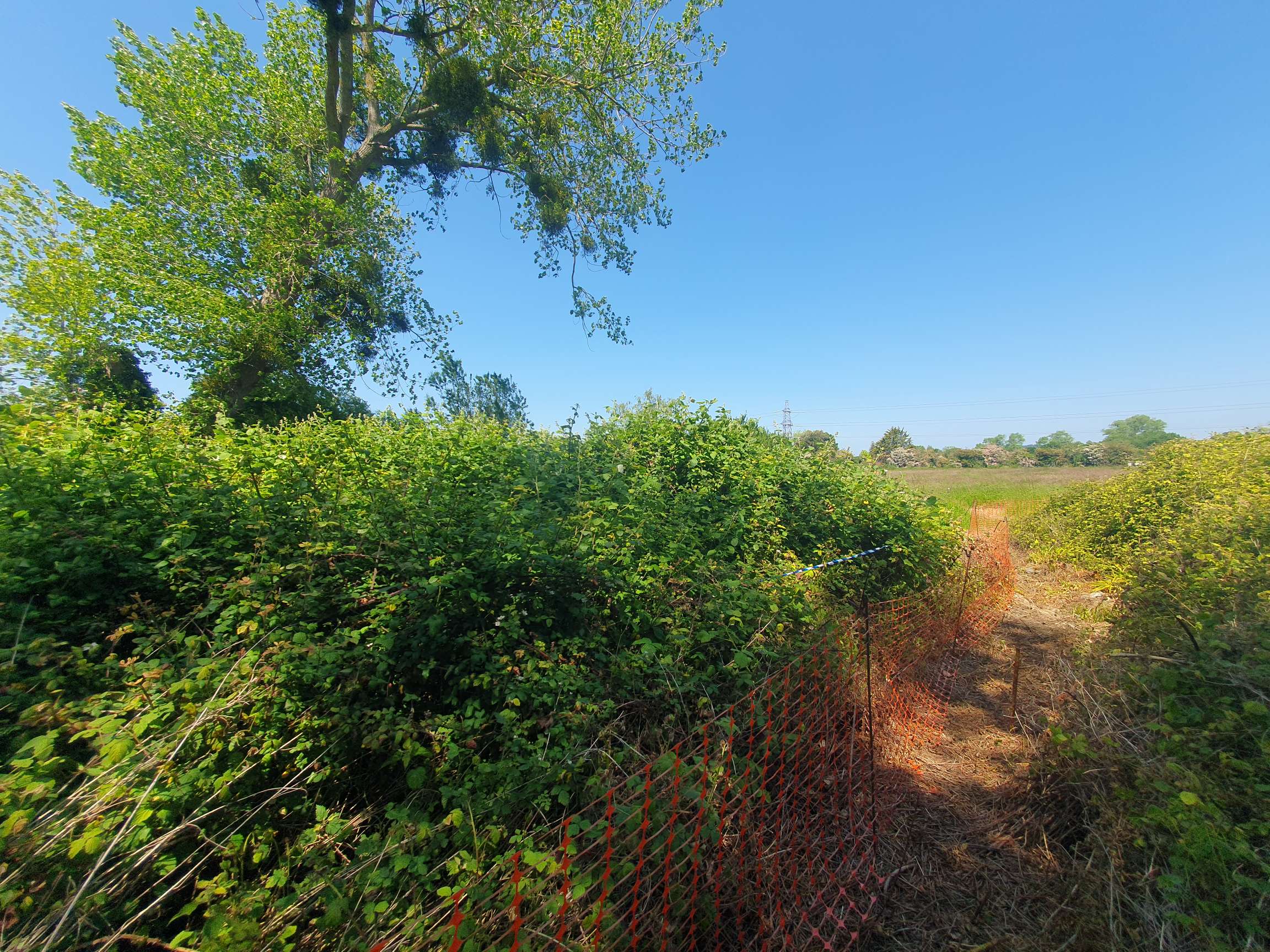PROJECT EXAMPLE: TWO PHASE KNOTWEED EXCAVATION
Sometimes we can’t always complete a project in one go. Various factors mean we have to split the project up to allow for environmental factors. On this contract the excavation and removal of Japanese knotweed from a development site with consideration of nesting birds made this a two-stage project as we cannot operate machinery during nesting season.
PROJECT OVERVIEW
Japanese Knotweed Ltd (JKL) was contracted to remove Japanese knotweed from a site in Chichester by commercial developers Dandara Ltd. The site was challenging not only for the wet weather conditions (the blue sky is deceiving) causing waterlogged ground but for ecological reasons too. It’s important to work around other species within the habitat, protecting the environment is key to all projects.
THE SITE
A site deemed for housing meant that as the Japanese knotweed would be disturbed by the development it needed to be excavated rather than treated with a herbicide programme. There were trees within the vicinity of the knotweed and other vegetation that needed to be cleared, in part to allow for unimpeded mechanical knotweed excavation and also as part of development site clearance works. We would use airspade extraction in this area around trees that were deemed to be preventing full excavation.
Following the vegetation clearance works (to erect knotweed warning fencing) in proximity to the known knotweed areas we were also chemically treating, the total visible extent of growth amounted to 53m2. As you can see from the images this was a challenging project due to excessive rain causing flooding. But it didn’t deter the team – who work in all (or most) weathers.

PHASE 1
we completed full excavation of three knotweed stands, with all waste relocated to a stockpile and then removed to landfill. We were unable to excavate the forth area in phase one, due to the presence of nesting birds. Because the knotweed had to remain in situ until phase two we installed a vertical root barrier and fixed it to the temporary fence line using gravel boards and pegs, to prevent any ingress from the the knotweed in this area back into site.

PHASE 2
Upon receiving instruction from the client we returned to site to excavate the forth area using the airspade method which is a more environmentally compatible method. The knotweed stems and rhizomes were picked and bagged for removal by grab lorry to landfill.


THE OUTCOME
Dig and dump removed approx. 243 tonnes. The site was left knotweed free and with a guarantee in place to ensure the client would have no issues further down the line with this development.
We provide a range of excavation options to suit the site and your project needs, to find out more or ask the team a question get in touch.



